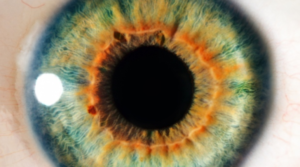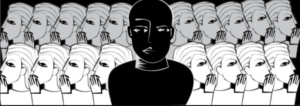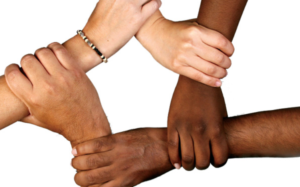(Or, really, why the way we treat the problem of racism is wrong)
So, what is racism? A quick Google search for the definition of the word tells us that racism is “prejudice, discrimination, or antagonism directed against someone of a different race based on the belief that one’s own race is superior.” Seems simple enough. But how do we classify what a racist action is and what it isn’t? Should our definition of racism be based on conscious (explicit) or unconscious (implicit) bias? To aid us with such a question, I used a study performed in 2018 by a group of U.K. researchers: Steve W. Kelly, Eimear Finnegan, and Katrin K. Kalla. This study built on the work of previous social scientists to test explicit versus implicit racial bias and whether most instances of knee-jerk prejudice are conscious or unconscious. I wish to use this study not just to inform the public, but also show people that not all racism is a purposeful slight against another race, and that sometimes it can come from an unconscious bias. Hopefully, this could lead the public to be more cautious in condemning people as “racist”, and focus their efforts as a society more directly at the true perpetrators of prejudice among us.

On to the study. Kelly, Finnegan, and Kalla decided they would test for bias by using a system utilized by their predecessors: the dot-probe task. Employed in 2012 by another set of researchers – Al-Janabi, MacLeod, and Rhodes – the dot-probe task is a system where the subject is basically required to respond to an object quickly, almost reflexively. In this case, volunteers from a local university would be asked to respond to faces of varying perceived races, from black to white to asian. The timing of the participants’ responses would indicate their bias towards or against certain perceived races. Then subjects would rate the 80 faces they were shown in the previous dot-probe task on a 7-point Likert scale for threat. Additionally, Kelly et al. put in place a second test to ensure accurate results. This time, the subjects would fill out a paper investigating their contact with other races, in which participants would write down the initials of up to 20 of their closest friends. The participants would then be asked the race of each friend, a factor which would be included in the overall results.
In total, there were 41 volunteers found for the experiment. All were white, young college students with a mean age of 22.4 years. 26 were female, 15 male. Informed consent was obtained and the study was approved by the School of Psychological Sciences and Health Research Ethics Committee.

Kelly, Finnegan, and Kalla got right to work – and what they found was interesting indeed. In the results, there was shown to be a much higher implicitly biased response to black faces rather than white or asian ones. The close-friend-questionnaire outcomes back these results up. However, there was a lack of correlation in the “threat-level” tests’ results, which suggests that perhaps certain volunteers opted to censor themselves on the test for fear of being seen as prejudiced by others. This throws a monkey wrench into overall conclusions, but there is clearly a higher level of implicit bias rather than explicit bias against other races when it comes to a white person’s knee-jerk reactions and decisions. But what does this mean for the public? How does this contribute overall to the nationwide fight against racism in America?
In our country today, most people who commit acts seen as “racist” by others are commonly condemned by society as evil people. This method of dealing with prejudice is heavily based in the assumption that all racism is conscious, a belief held and fostered by the person committing the act. Yet, Kelly, Finnegan, and Kalla’s study suggests that this is not the case – that, rather, most people commit acts of prejudice out of an unconscious bias, something they can’t help but act on. So maybe it would be better to hold off on the accusations against “racists” as if they were criminals, and rather reduce the conflict’s intensity. Perhaps it would be better to re-focus efforts towards interventions against “negative implicit attitudes to race”, as Kelly et al. calls it (2018). This could lead to the fight against racism in its entirety to be boiled down to a battle against those people who truly are “racist”, who express outward, conscious prejudice against those of another race.

Still, there are counter-arguments to this idea. Namely, the reasoning that no matter the type of prejudice, explicit or implicit, all example of racism must be eliminated without bias. The problem with this case is that if most racism is truly implicit, truly ingrained in a person’s subconscious (as this study suggests), “eliminating” such behavior would prove impossible. Therefore, it would be a better use of energy and time to target members of society who demonstrate explicit bias towards others. This kind of racist is remediable, the kind of racist someone who expresses implicit bias is not.
And now we come to a close. You’ve seen a study – one that is the latest version of it’s predecessors, and seems to have made a revolutionary discovery in terms of the fight against racism. These results could lead to a more effective resolution to the overall conflict, and a total reduction in unnecessary accusation, hurt feelings, and shattered pride. On the other hand, this study’s outcomes could go totally disregarded in favor of an unbiased approach to eliminating bias, one that does not discriminate between implicit and explicit prejudice. Hopefully, things go the other way. Hopefully, we can take this information in a way that can lead to an easier, perhaps kinder solution to the whole clash. Unfortunately, for this study to truly be effective in the way I wish it could be, there would need to be more of it – basically, more studies correlating this evidence, as well as studies giving concrete reasons for such a surprising amount of implicit racially prejudiced responses. Only then would this study and it’s like be able to be taken really seriously and have a greater chance of affecting our nation’s society as a whole.
One can only hope.
- Adam J. Brehob